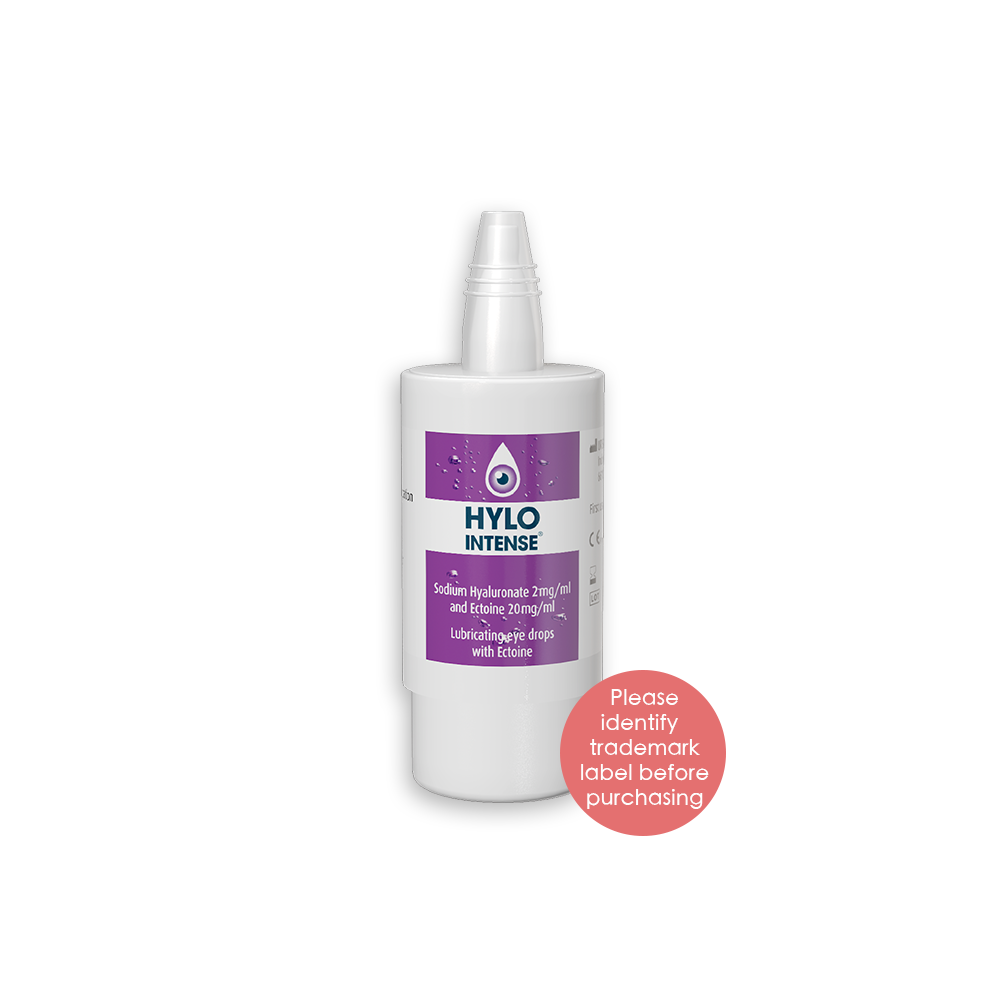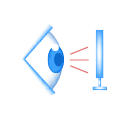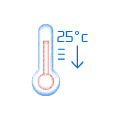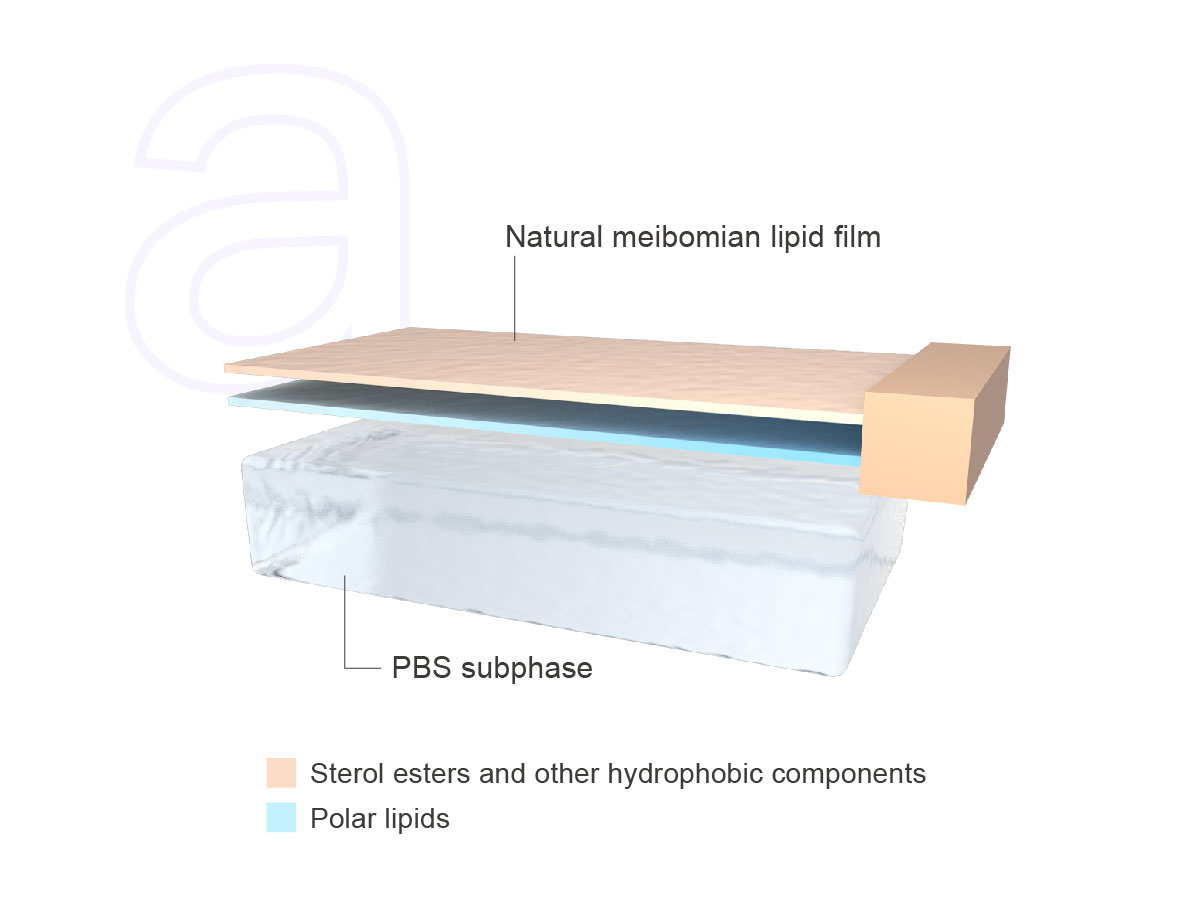01 / 03
HYLO INTENSE®
by Ursapharm
IntroductionMedication Usage
Hylo INTENSE®
Intensive Moisturizer for Dry Eyes
-
Severe dry eyes
-
Prolonged eyestrain
-
Intense burning sensation
-
Persistent sensation of foreign body
Hylo INTENSE® Ingredient Information
Dual-patented ingredients effectively interrupts the vicious cycle of severe dry eye.
HYLO®-Hyaluronic Acid
HYLO® -Hyaluronic Acid in HYLO INTENSE® deep moisturizing eye drops opens up endless possibilities for eye hydration and care
- Attracting water molecules, thickening and stabilizing the tear film
- Reducing the effects of mechanical trauma to the ocular surface by lubrication
- Contribution for re-epithelialization
- Combination of HA and hyaladherins activate the wound healing signals
Ectoin®
Ectoin® is a low molecular weight cyclic amino acid derivative produced by various extremophilic microorganisms. Ectoin® is known as an extremolyte (osmoprotectant from extremophilic microorganisms).
These low molecular weight compounds accumulate with increasing extracellular salt concentrations and also serve as a response to other environmental changes, such as extremely high temperatures. *Hyaluronic Acid brings you infinite possibilities.
Characteristics of Ectoin®
- Stabilisation of Proteins and the structure of cells
- Membrane stabilisation and increase in membrane fluidity due to Ectoin®
- Prevention of release of stress mediators
According to the above picture :
- Ectoin® in HYLO INTENSE® acts as a protective solute that safeguards the epithelial cells of the cornea and conjunctiva from damage caused by increased osmotic pressure in tears. Its unique feature is to protect cells from osmotic stress without affecting cell metabolism or the functionality of cellular proteins.
- Ectoin® forms a protective shell around the eye, improving the binding between the ocular surface and water molecules. Additionally, “HYLO® Hyaluronic Acid” effectively binds water molecules, restoring the normal osmotic pressure of the tear film. Ectoin® protects protein molecules in the cell membrane of epithelial cells from denaturation.
- Ectoin® and “HYLO® Hyaluronic Acid” provide protection to the epithelial cells of the cornea and conjunctiva, thereby inhibiting the release of inflammatory mediators triggered by external stress factors.
Illustration of high-concentration Ectoin® molecules interacting with the tear film lipid layer
According to the above picture,Ectoin® increases the compressibility of the lipid layer. With each blink, the lipid layer is compressed and then stretched again. The lipid layer needs to have a “fully reversible” characteristic to restore a stable arrangement on the tear film surface. Ectoin® enhances the elasticity of the lipid layer and promotes the even diffusion of lipid molecules across the tear film surface. Improving the distribution of the lipid layer reduces excessive tear evaporation.
HYLO INTENSE® fully-treatment capable for any problems of tear film!

The Patented System
Hylo-INTENSE® supplied in bottles with the patented COMOD® system.

Preservatives Free
The negative pressure created pulls and the flexible inner sachet more. The inner sachet stays sealed and the liquid is protected against contamination from the air.

Can be used 6 months after opening
The contents remain sterile for a period of use of 6 months.

Drop-by-drop dosage
The COMOD® dosage system makes it possible to dispense exactly one drop per pump stroke.

Restoring Tear Film
The tear film is stabilized as ectoin® stabilizes the lipid layer. The lipid layer which is repeatedly compressed by the eyelid on the eye surface is elastic and thus easier distributed when the eye is open.
































